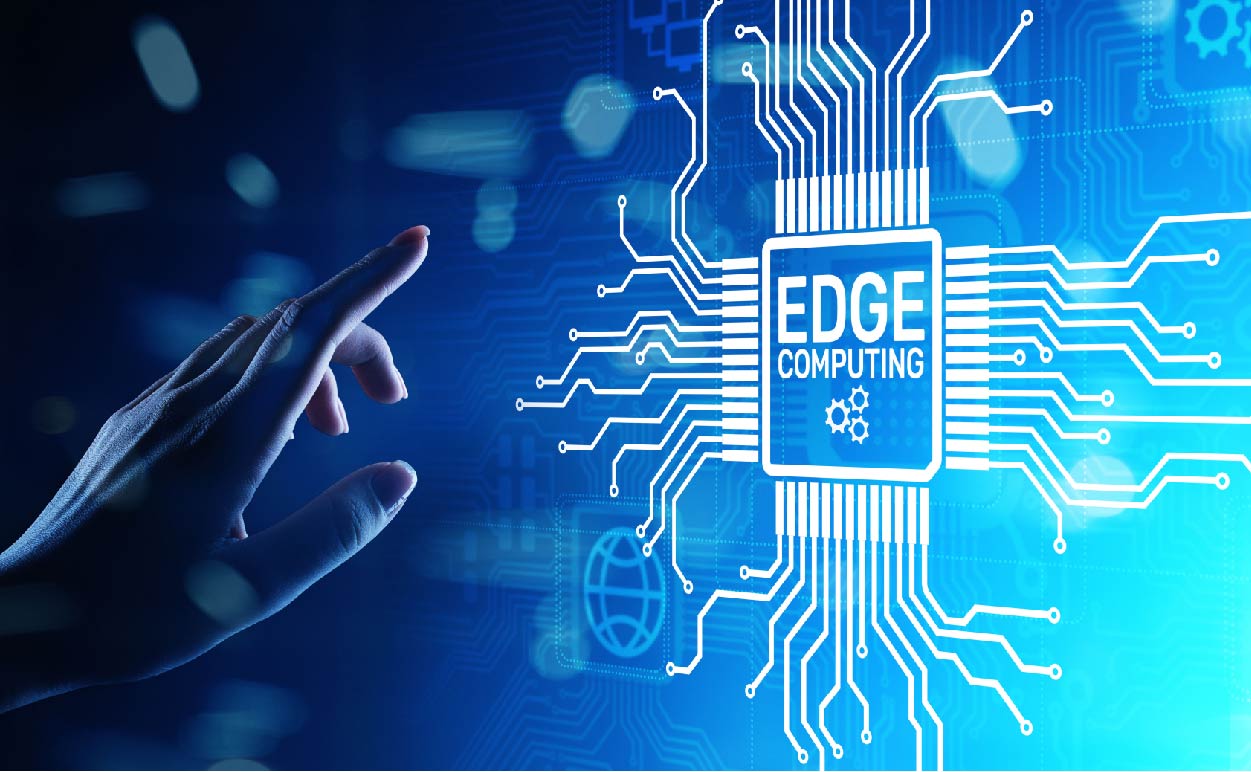
In the era of IoT technologies, edge computing emerges as a new computing approach that could significantly benefit enterprises' network infrastructure
We have witnessed a veritable explosion of IoT devices in the last few years. The increased complexity and The advancements in 5G and Internet-of-Things have triggered the emergence of multiple tech innovations, one of which is edge computing. Unlike cloud computing, which involves handling data in far-off data centers, edge computing as a distributed computing topology where data is processed and analyzed nearer its source.
While the concept might still seem unfamiliar with several firms, the edge computing market is booming. According to McKinsey, by 2025, edge computing would represent a potential revenue of up to $US 215 billion in hardware.
The benefits of edge computing are plentiful.
Reduced bandwidth and latency
As smart devices are proliferating, large amounts of data have been generated. By 2024, the total volume of data created, captured and consumed is predicted to reach 149 zettabytes, which would quickly outpace the available bandwidth. Additionally, not all datasets are relevant. With edge computing, data can be examined at the point of origin, and only critical data could be sent to the cloud for storage. And since less data is delivered to the cloud, organizations could reduce bandwidth use.
Furthermore, the reduced amount of data traversing over a network to a centralized data center would help firms address the latency issue. It is a typical problem in a cloud-only landscape that could bottleneck a network and eventually disrupts its performance. Let's take security camera, for example. To ensure security, organizations often set up multiple cameras on a site. Each camera is continuously streaming data to the cloud, leading to excessive use of bandwidth. But with edge computing, the cameras could process the data at their own source and only stream the critical footages to the cloud while disposing of the rest.
Real-time Data Analysis
As edge computing drives computing closer to where the data is generated, it could provide real-time local data analysis. The benefit is particularly relevant in the retail landscape. Thanks to edge computing architecture, radio-frequency identification (RFID) systems could proactively notify retail staff when products are placed in the wrong location. Moreover, RFDI systems executing edge analytics could continuously compare inventory flow with manifests, schedules, inventory logs, and alert staff when there is an inventory shortage.
Similarly, self-driving cars are also required to make lightning-fast decisions. The vehicle cannot risk even the slightest delay before applying the brakes if a person suddenly runs across the street. Therefore, self-driving cars need edge computing to perform analytics locally and in real-time without initially sending data to a faraway data center.
Advanced data and network security
As cloud computing is a centralized architecture, it is susceptible to long-lasting power outages and distributed denial of service (DDoS) attacks. On the other hand, edge computing could convert cloud computing into a more distributing architecture. In the event of a disruption, the architecture's dispersed condition allows security teams to isolate compromised areas of the networks without closing down the entire system.
Edge Computing as a Complement, not a Substitute for Cloud Computing
Although edge computing seems to outperform cloud computing in some aspects, the former would not substitute for the latter. Rather, the two types of architecture should be seen as mutually exclusive approaches to network infrastructure as they serve different purposes. Edge computing seeks to collect and process data on-site almost immediately and analyze it in real-time. On the other hand, Cloud computing comes into play when firms need storage and to perform specific processes and applications, as well as to visualize telemetry data from any place.
One of the key fundamentals of developing enterprise-level IoT projects is to make a balanced use of cloud and edge computing. Thanks to edge computing benefits, blended IoT solutions that include edge computing could reduce latency, increase scalability and boost access to data compared to cloud-only projects.
Take smart buildings as an example. A smart building is a digitally connected structure. The edge computing power would provide data from strategically positioned sensors to a cloud-hosted service that executes some analytics. These analytics would improve operations by sending back the results through the edge server to adjust the schedules of equipment connected to the system. A combination of edge and cloud computing subsequently allows for more effective resources management.
In the era of IoT technologies, edge computing emerges as a new computing approach that could significantly benefit enterprises' network infrastructure. However, that is not to say that edge computing could replace cloud computing. They should be viewed as complementary architectures that aid in the execution of increasingly complex IoT projects.
References
Deloitte (2019). Scaling IoT to meet enterprise needsBalancing edge and cloud computing.
Forbes (2020). 3 Advantages (And 1 Disadvantage) Of Edge Computing.
Information-Age (2020). How the edge and the cloud tackle latency, security and bandwidth issues.
McKinsey (2018). New demand, new markets: What edge computing means for hardware companies.
Statista (2020). Volume of data/information created, captured, copied, and consumed worldwide from 2010 to 2024.































